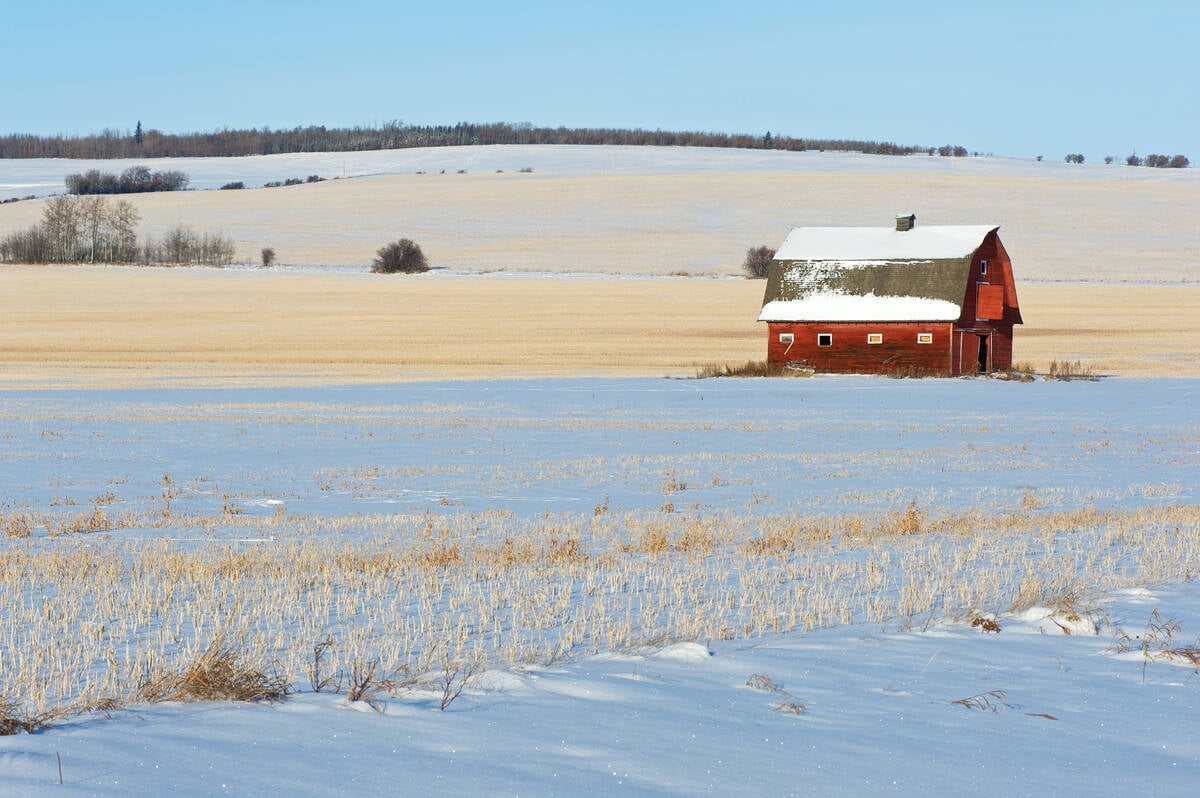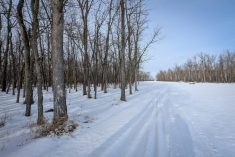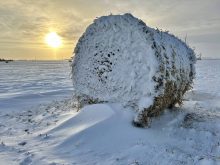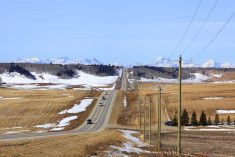MarketsFarm — After copious amounts of precipitation alleviated the most severe drought conditions in Saskatchewan and Alberta, there were still some areas dealing with extreme dryness entering July, according to the Canadian Drought Monitor.
At the end of June, only 22 per cent of the Prairie region was classified in the Abnormally Dry (D0) to Extreme Drought (D3) ranges, including 39 per cent of farmlands. A very small area of Alberta bordering both Saskatchewan and Montana was in D3, while areas of severe drought (D2) were found in areas west of Regina and Saskatoon, as well as the Alberta/Montana border. Moderate drought (D1) and abnormally dry conditions were found in most of southern Alberta and both northern and southern Saskatchewan.
Read Also

Prairie forecast: Plenty more chances for snow over Holidays
The pattern of Pacific storm system after Pacific storm system looks set to continue for a while longer. We begin this forecast period with a heavy snowfall warning in effect across parts of Alberta.
Drought conditions were improved substantially as rain fell on south and central Alberta in June, including a system which brought 75 to 125 millimetres in the Calgary area in the middle of the month. While some areas in Alberta received one-third of their annual rainfall in three weeks, it was much needed for crop growth and pasture recovery, where conditions were brought in line with five- and 10-year averages. Northern Alberta received near-normal precipitation in June.
Drought concerns were still present in southwest and south-central Saskatchewan with many parts receiving less than 40 mm during the month of June, less than half of normal amounts. As a result, D0 to D2 conditions slightly expanded to the east. Some cattle producers in those areas are reducing their herds, while communities have reported worsened water quality. Parts of northern Saskatchewan also remained dry with wildfires reported in some areas.
Excess moisture concerns remain in Manitoba after significant moisture in the spring led to flooding in the south. However, pasture, hay and crop growth have progressed well in areas where flooding and moisture concerns have subsided. There were no areas in the province which were abnormally dry or under drough — a far cry from last year when parts of Manitoba were the driest in Canada.
Across the country, 15 per cent was either abnormally dry or under moderate to extreme drought, including 29 per cent of farmland. No exceptional drought (D4) was reported in June.
— Adam Peleshaty reports for MarketsFarm from Stonewall, Man.
















